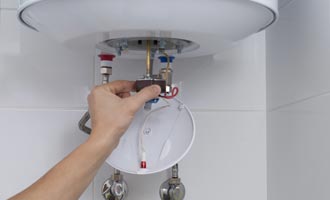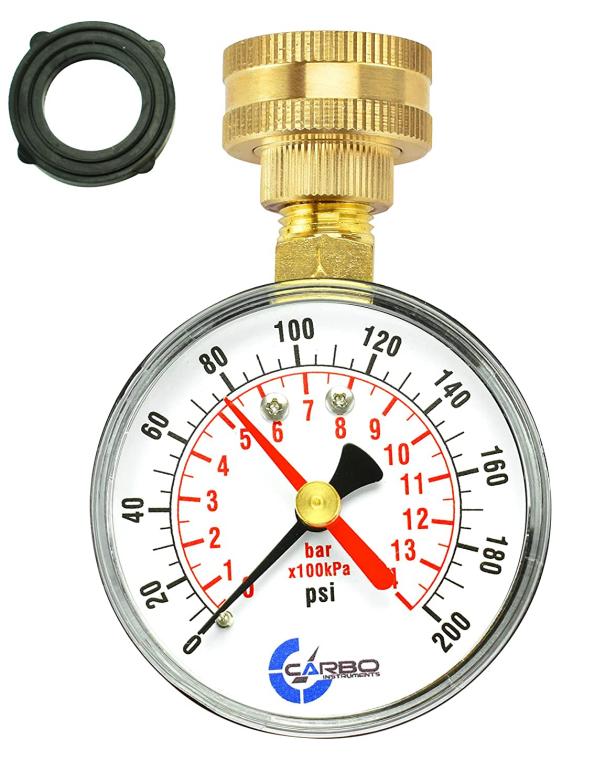Just about everyone is bound to have their own individual perception on the subject of Dealing with Low Water Pressure in Your Home.

Low water pressure in your home can be a discouraging trouble, impacting everything from showering to washing meals. If you're experiencing weak water flow, there are numerous possible causes and solutions to check out. In this guide, we'll review usual reasons for low water stress and sensible actions to resolve the issue successfully.
Introduction to Low Tide Pressure
Low water pressure occurs when the flow of water from your taps, showers, and various other fixtures is weak than common. This can make day-to-day jobs more difficult and much less effective. Comprehending the reasons for low water pressure is essential to discovering the right service.
Common Root Causes Of Low Tide Pressure
Faulty Stress Regulatory Authorities
Stress regulatory authorities are accountable for preserving constant water pressure in your home. If they malfunction, it can result in low water stress or uneven circulation throughout your house.
Community Water Supply Issues
In some cases, the issue exists outside your home. Municipal water system problems, such as main line leakages or maintenance job, can temporarily decrease water stress in your area.
Pipeline Obstructions
Over time, pipelines can become clogged with mineral deposits, sediment, or particles, limiting the flow of water. This is a common issue in older homes with galvanized steel pipes.
Corrosion
Deterioration within pipes can cause leakages and decreased water pressure. Corrosion build-up can tighten water circulation, particularly in maturing plumbing systems.
How to Detect Low Tide Pressure
Checking Pipelines
Check noticeable pipelines for indicators of leakages, deterioration, or blockages. Take note of any kind of uncommon noises, such as banging or rattling pipes, which can suggest issues within the plumbing system.
Consulting with a Plumber
If you're not able to identify the source of low water pressure, take into consideration employing a professional plumber to conduct a thorough examination. They can determine underlying problems and recommend ideal services.
Checking Faucets and Components
Start by testing the water stress at various taps and fixtures throughout your home. If the issue is separated to particular locations, it may suggest local issues.
Do It Yourself Solutions to Take Care Of Low Tide Stress
Flushing Water Heater
Debris build-up in the water heater can restrict flow and lower effectiveness. Purging the storage tank regularly helps remove debris and preserve ideal efficiency.
Inspecting Stress Regulatory Authority
Make sure that the pressure regulatory authority is working properly. Changing or replacing the regulator can aid recover correct water stress throughout your home.
Cleansing Aerators and Showerheads
Mineral deposits can build up in aerators and showerheads, decreasing water circulation. Remove and clean up these parts frequently to boost water stress.
Clearing Up Clogs in Piping
For small clogs, try utilizing a plumbing snake or chemical drain cleaner to clear blockages in pipelines. Be cautious when using chemicals and adhere to safety and security standards.
When to Call a Professional Plumber
If DIY initiatives fall short to solve the problem or if you think significant plumbing troubles, it's ideal to seek aid from a qualified plumber. They have the know-how and devices to deal with complicated concerns safely and efficiently.
Safety Nets to Maintain Water Stress
Setting Up a Pressure Booster
Consider installing a stress booster pump to improve water pressure in areas with regularly low circulation. This can be specifically useful for multi-story homes or homes with high-demand components.
Monitoring Water Use
Bear in mind water use practices and stay clear of overtaxing the plumbing system. Basic adjustments, such as incredible showers and washing tons, can aid maintain appropriate water pressure.
Regular Maintenance
Schedule routine upkeep for your plumbing system to avoid issues such as rust, leaks, and clogs. Resolving minor problems early can help stay clear of more considerable repair services in the future.
Conclusion
Handling low tide pressure can be irritating, however determining the underlying reasons and executing suitable options can restore ideal circulation throughout your home. Whether it's cleaning aerators, evaluating pipelines, or talking to a plumber, taking aggressive actions can make sure a consistent supply of water for your daily demands.
9 Solutions to Low Water Pressure
If you have ever struggled to rinse the shampoo out of your hair, washed your hands under a trickle of water, or been forced to wait for your washing machine to complete a cycle, then you have experienced the nuisance of low water pressure. Low water pressure can turn a simple task into a hassle, but once you identify the cause, either the necessary plumbing fix or a water booster pump can drastically improve your water pressure. In this article, you can learn about nine common causes of low water pressure and how to resolve low water pressure in your home.
How do you know if you have low water pressure?
Testing your home’s water with a pressure gauge is the easiest way to find out if you have low water pressure. Pressure gauges are simple and inexpensive, and once installed, will allow you to check your water pressure with a quick glance.
If your water is from a municipal water supply, select an outdoor faucet near where the main water line enters your home. If your water is from a well, select a faucet that is close to the well’s pressure tank. Attach the pressure gauge to the faucet and tighten it. To get an accurate reading, make sure water isn’t being used anywhere else inside or outside the house, and then fully turn the faucet on. Once the faucet is on, you can read the water pressure on the gauge’s dial. Typical home water pressure should be between 40 and 50 psi, so if the dial reads less than 40 psi, you have low water pressure.
Do water booster pumps increase water pressure?
A water booster pump is a centrifugal pump that improves low water pressure and increases water flow. Much like how a fan’s blades create a gust of air, a water booster pump’s rotating impeller draws water in and then pushes it out with increased force. This force raises the water pressure in a system. A water booster pump is installed where the main water line enters your home, so water pressure is improved in every tap and appliance.
What causes low water pressure?
1. Hard water
If you have hard water, scale can accumulate in your pipes, restrict the water flow, and reduce your water pressure. Hard water has a high mineral content, specifically calcium and magnesium, and scale is formed when these mineral salts dissolve.
The solution: When scale buildup is severe enough to restrict water flow and reduce water pressure, the best solution is to replace your pipes. Products like CLR Calcium, Lime, and Rust remover can diminish scale, but as the scale comes off it may clog your pipes, creating another costly plumbing problem. Not to mention, it is never a good idea to put harsh chemicals in the pipes that supply your drinking water. To prevent scale in the future, we recommend installing a water softener.
The main water shut off valve is not open.
If your water pressure has suddenly decreased and you recently had a repair done, make sure the main water shut off valve is fully open. Most plumbing repairs require the water to be shut off, but if the valve is not completely opened afterward, your water pressure will be restricted.
The solution: Locate your main shut off valve, which is installed where the main water line enters your home, and fully open it by turning it counterclockwise.
A municipal water problem
Low water pressure may not have to do with your own plumbing system. Just like your home’s water supply, the municipal water supply is subject to problems that can cause low water pressure, such as leaks and corrosion.
The solution: Call the municipal water supply to report your low water pressure. Your input may alert them to the problem and will ensure your water pressure is restored as quickly as possible.
Faulty pressure regulator
A pressure regulator is a valve that reduces incoming water pressure as water flows into your home from the main service line. High water pressure can damage pipes and plumbing fixtures, so a pressure regulator is installed to protect your home plumbing system. Most are set to 50 pounds per square inch (psi), but if yours is set lower, your water pressure will feel low. If your pressure regulator is set to 50 psi but your pressure still feels low, it may be broken or clogged.
The solution: Adjust your pressure regulator’s setting to 50 psi if it is currently set lower. If your pressure regulator is faulty, ask a plumber to replace it.
A leak
A leak can reduce water flow and water pressure. To determine if you have a leak, turn all the faucets off inside and outside of your home. About an hour later, check your water meter. If it indicates you are using water, you have a leak.
The solution: Enlist the help of a licensed plumber to locate and repair the leak. Once the repairs are complete, your water pressure should return to normal.
https://www.freshwatersystems.com/blogs/blog/what-causes-low-water-pressure-and-how-to-improve-it

I came across that entry on Dealing with Low Water Pressure in Your Home while exploring the search engines. Appreciated our piece of writing? Please share it. Help someone else locate it. We appreciate reading our article about 9 Reasons for Low Water Pressure in Your House.
Contact Us
Comments on “Simple Strategies for Fixing Low Water Pressure in Your Home”